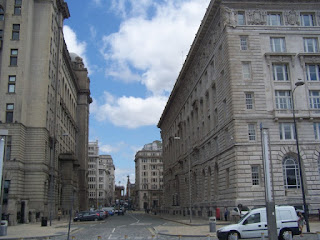For many years Liverpool was a prosperous trading city and
this is partly illustrated by the substantial and impressive buildings in the
city, particularly in the area near the docks and in the city centre.
A number of museums combine to tell the history of the city.
The Liverpool Museum concentrates on the development of
Liverpool, past and present.
The Merseyside Maritime Museum describes the history of
shipping in Liverpool over the centuries while the Slavery Museum, on the top
floor of the maritime museum, examines Liverpool’s part in this movement.
Sailing ships encountered problems with the wind in the
river so areas such as the Albert Docks were built to protect the ships.
Liverpool was a major port for trade, especially with America, but was also an
important departure port for those leaving England for other countries. During
the Second World War with the German attempt to stop goods arriving in and
leaving England the importance of Liverpool increased. Military ships acted as
escorts to the transports however Liverpool also faced bombing from the
Germans. The demise of Liverpool as a trading centre occurred with the arrival
of container ships drastically reducing the size of the workforce required on
the docks plus the role of Liverpool as a major port.
Two major exhibitions in the maritime museum are on the
sinking of the Titanic and the sinking of the Lusitania. Other memorials to
these ships can be found in the dockside area.
 |
| Propeller of the Lusitania |
 |
| Memorial to men in Marine Engine Room on the Titanic |
Birds, especially large seagulls, are everywhere - particularly in the dock area.
The symbol of Liverpool is the Liver bird – a fictional
creation.
 |
| A Liver bird on top of the Liver building |
A number of versions can be seen throughout the city.
 |
| A version of the Liver bird once on a building now in the museum |
|
|
 |
| Another version of the Liver bird in the museum |
Outside the Liverpool Museum can be found these bright and colourful characters. A number of their friends can be found elsewhere in the city. It started with one large yellow
superlambanana and they then multiplied. Seventy smaller
superlambananas appeared throughout the city and were then auctioned as a fundraiser for the hospital. A selection remain on public display.















No comments:
Post a Comment